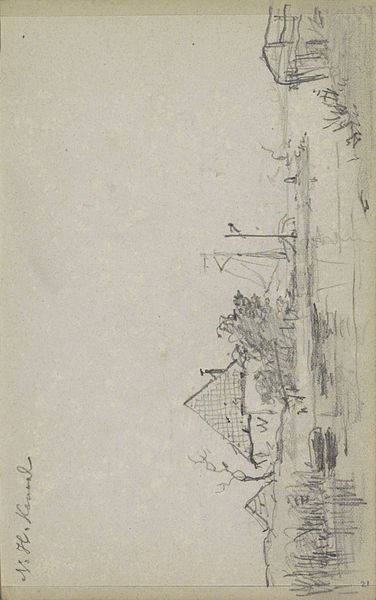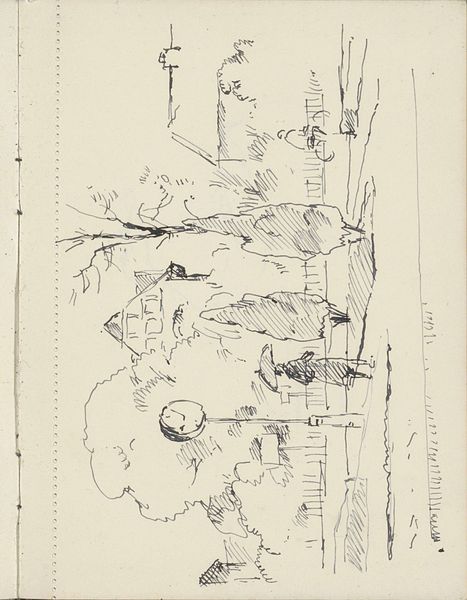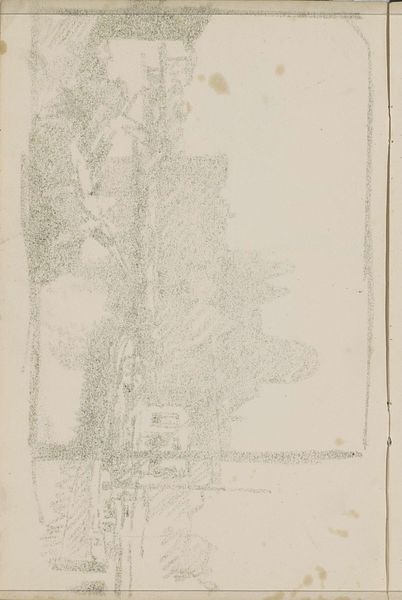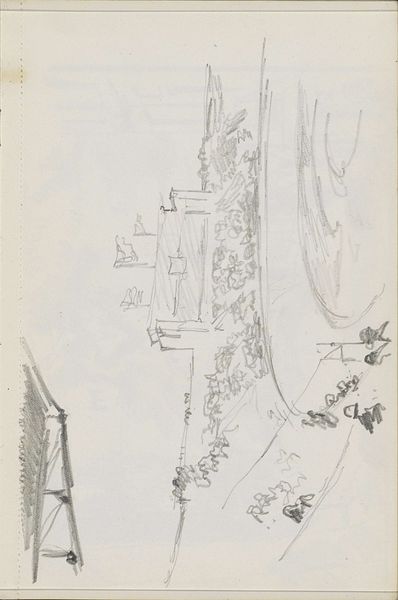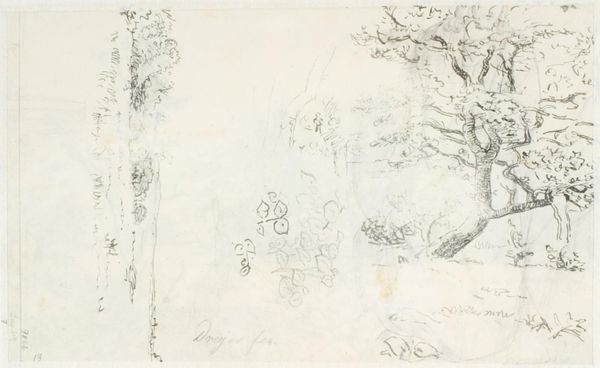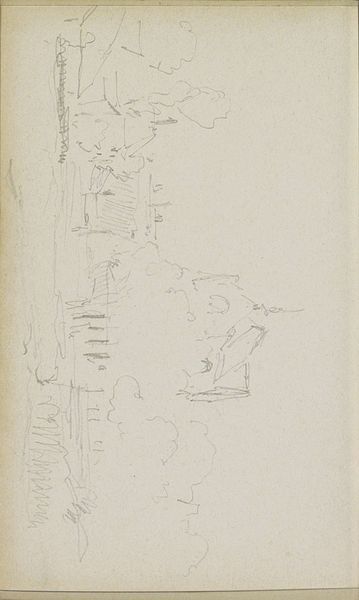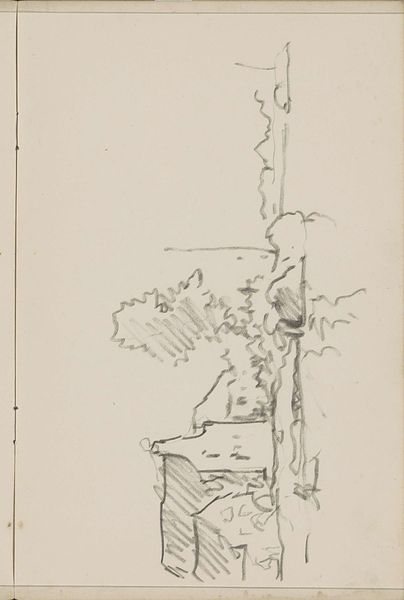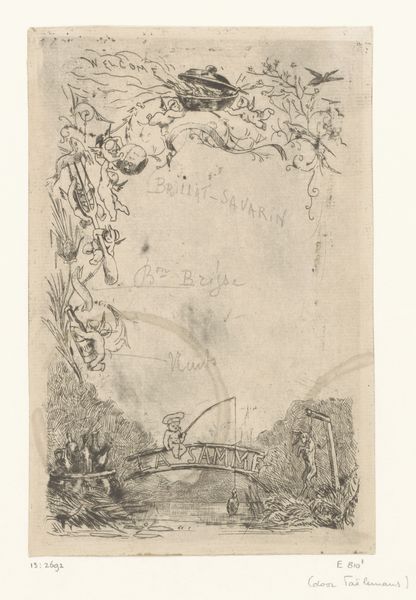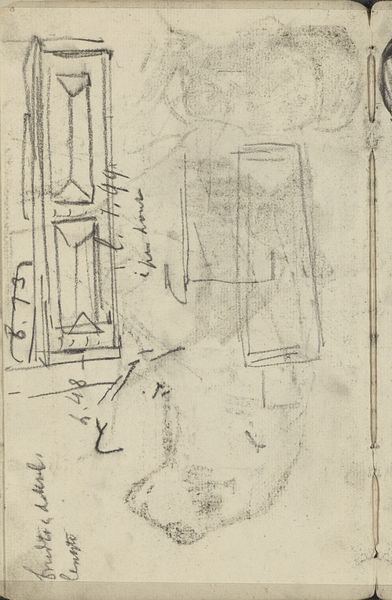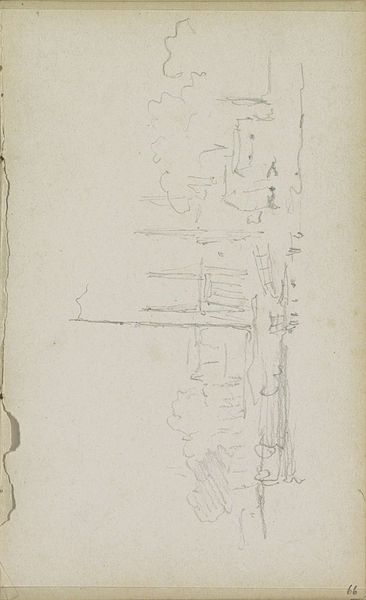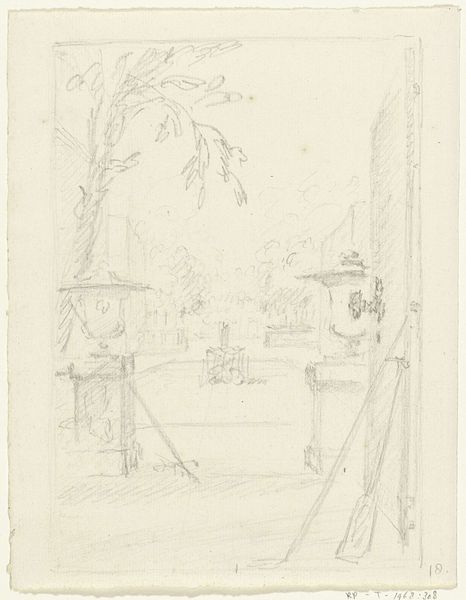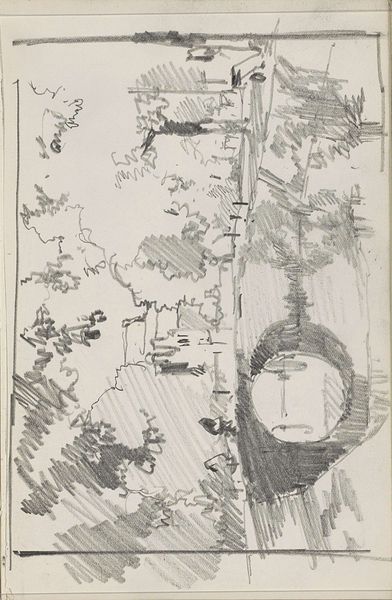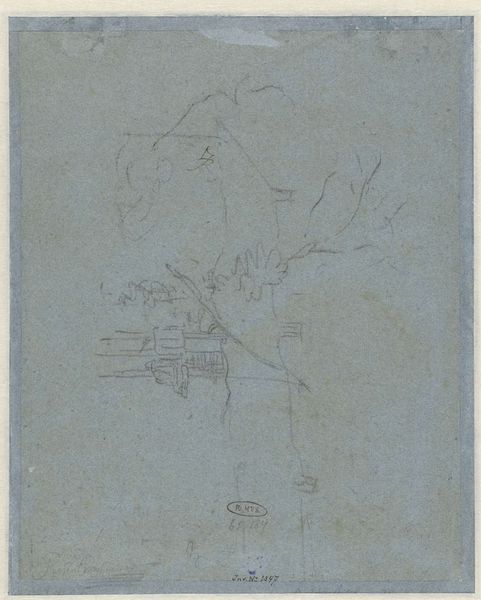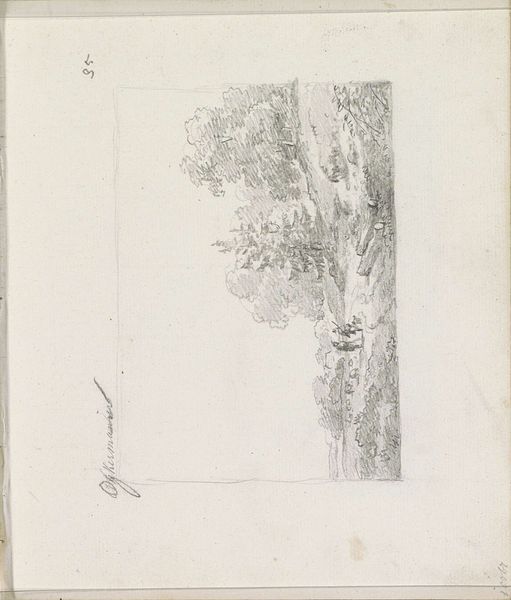
drawing, print, etching, ink
#
drawing
# print
#
etching
#
landscape
#
etching
#
ink
#
line
Copyright: National Gallery of Art: CC0 1.0
Curator: Looking at "La Terrasse," or "The Terrace," created in 1932 by André Dunoyer de Segonzac, immediately gives one a feeling of airy lightness. It’s a beautifully delicate etching, rendered in ink, which allows Segonzac to capture a serene outdoor space with apparent ease. Editor: It's interesting how the materials themselves seem to dictate the mood. The etching feels unfinished, a fleeting moment captured on paper. The visible, sparse lines feel less like a deliberate artistic choice and more about the inherent limitations – and also the possibilities – of the medium. Curator: I think that's an insightful way of approaching it. Segonzac, deeply affected by his experiences in the First World War, consistently turned to the landscape as a space for recuperation, using it to examine themes of respite from societal tensions. The deliberate open space here suggests a desire to provide some calm amidst the chaos of early 20th-century life. This print certainly underscores the escapist and even gendered concept of "terrace," commonly understood as a private space. Editor: I'm thinking less about escape and more about what’s physically there, or rather, what isn’t. Look at how little ink he uses. He emphasizes the flatness of the paper by leaving the majority of it untouched. This wasn't an inexpensive process. So how does the etching as a commodity fit in with the depicted space and this feeling of airy respite? Does this render the print somewhat bourgeois in its making or depiction of leisured terrace-dwelling? Curator: Perhaps that tension, between the simple scene depicted and the artistic labor and socio-economic associations behind its creation, adds complexity. While seemingly pastoral, it also asks questions about the material realities supporting this "restful" vision. The question about the ethics behind image-making definitely arises. Editor: Ultimately, the piece demonstrates the possibilities and implications when an artist foregrounds the act of making through strategic use – or lack thereof – of their materials. Curator: I see how his choice to not completely "fill in the blanks" provides social context, drawing the viewer to contemplate not just what is being depicted, but how. Editor: Exactly. The labor behind the lines matters.
Comments
No comments
Be the first to comment and join the conversation on the ultimate creative platform.
